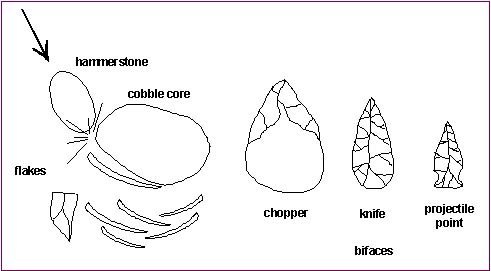Hickory Bluff Project

Come Explore Your Heritage. Dive Into The Past
Issue 8: Making Stone Tools
Stone was the material from which many of the tools used at the Hickory Bluff site were made. The most common process for making tools from stone involved chipping flakes from a large cobble or angular rock fragment. Flakes were initially removed by striking the edge of the cobble with another rock, referred to as a hammerstone. The flakes knocked off the cobble could be used as tools themselves. Occasionally, all that we find at an archaeological site are the exhausted nodules, or cores, from which many flake tools were produced.

More sophisticated tools were made by striking the cobble alternatively from two sides or faces, producing a sinuous, bifacial edge. As flakes were systematically removed, the object was reduced in size, and so archaeologists often refer to the process as a reduction sequence. The resulting bifaces could be used in several forms along the sequence. Large, heavy pieces with relatively few flakes removed from them were used as chopping tools. More completely flaked bifaces with straight, sharp edges were used as knives, for cutting or scraping tasks. Finely flaked tools were used as the tips of spears or arrows, and are referred to collectively as projectile points.








